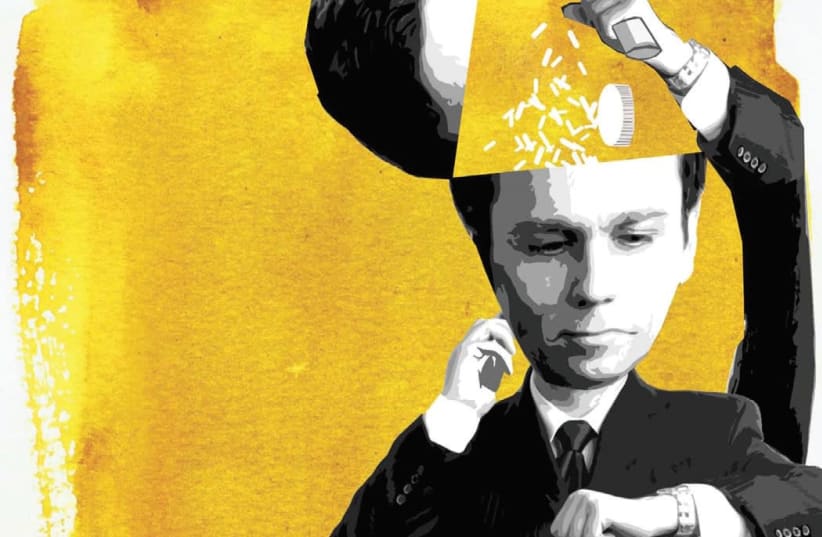The most common treatment for ADHD is the use of stimulant medication such as Ritalin or Concerta. These stimulant drugs have been around for more than 50 years and they have helped millions of youngsters perform better in school. However, what happens when an undiagnosed child who has ADHD becomes an adult and his/her ADHD remains undetected?
Mental health experts explain that the signs of adult ADHD are not the same as they are in children, since the symptoms evolve into a more adult form of the disorder. Whereas the child acts out his/her symptom cluster in a behavioral way, by hyperactivity or day dreaming, many adult symptoms are expressed emotionally in feelings of restlessness, disorganization and/or forgetfulness.
Other common indications of adults who have ADHD may include anger issues, relationship problems, frequent job changes, hyperactivity, impulsivity and difficulty organizing and paying attention. Some ADHD sufferers even tend toward addiction, because they are self-medicating. Unfortunately, far too many adults with the disorder suffer from the consequences of having ADHD but do not get help.
Jay and Lisa came to me for marital therapy. Both in their late forties, they were the parents of three adult children who had left home. After getting to know the couple, it became obvious to me that Lisa was dissatisfied with Jay for his long history of underachieving both in school and at work.
Jay had always had difficulties performing in any educational framework. He told me that he often lost things and was forgetful. His strict parents would punish him whenever he did not to live up to their standards.
When Jay started treatment, he was working in a library, collecting the books that were left on the tables and returning them to the stacks. Lisa was frustrated with Jay, for she felt like he was not doing his share both in earning money and performing household chores. Lisa, on the other hand was an intelligent, driven and successful hi-tech administrator.
As I learned more about Jay, I was impressed by his wealth of general knowledge and intellect. It seemed clear to me that, throughout his life, there was a disconnect between his capabilities and his actual performance.
One of three things often finds an explanation for this type of disparity: emotional or psychiatric problems, a learning disability, and/or ADHD. I ruled out the first two, so I had a strong hunch that maybe Jay had ADHD.
I gave him a standard questionnaire to fill out and he scored positive for inattentive ADHD. I next referred him to a psychiatrist colleague, who agreed with my diagnosis and prescribed a trial on long-acting (time-release) Ritalin.
For Jay and for Lisa, the medicine was a life-changer. He started to function better at work and at home and, for the first time, felt hopeful about his future. Because of this diagnosis, Jay’s relationship with Lisa improved immensely.
Yossi, a 24-year-old man, came to me for problems that he was having with moodiness. In fact, a psychiatrist had previously diagnosed Yossi with bipolar disorder and put him on a mood stabilizer.
However, Yossi’s major complaint was not his moodiness but rather his difficulty concentrating and poor academic performance. He could not sit still in the library when he needed to study for exams.
This expressed itself in his complaint of feeling restless. He told me that he drank a lot of coffee and smoked cigarettes to help him concentrate when studying, a classic case of self-medicating with stimulants. Nevertheless, he had major difficulties understanding the material from both his lectures and his reading.
This was in direct contrast to his very high intelligence. I gave him the test for adult ADHD and he came up positive in both the hyperactive and inattentive types of the disorder. The literature calls this combined type. He returned to his psychiatrist, who prescribed Ritalin. It worked very well and he started to excel in his studies.
When ADHD is present but not diagnosed, the fallout of the associated symptoms can cause emotional havoc in the life of these individuals. On-line screening tests, while available for adult ADHD, may be a helpful first step for someone to check for ADHD. However, these screening tests are only symptom checklists and not a diagnostic tool.
A thorough evaluation usually takes more than one visit, and must be done by a professional who is trained in the diagnosis of ADHD. Many psychologists, psychiatrists, neurologists, clinical social workers, therapists and some general practice physicians are trained to diagnose adult ADHD.
Moreover, other conditions such as anxiety, depression and bipolar disorder can sometimes mimic and resemble ADHD, so it is important to work with a professional who is able to rule out these other conditions and make the appropriate diagnosis.
The good news is that, when diagnosed, adult ADHD treatment can be very effective and improve people’s lives.
The writer is a marital, child and adult cognitive-behavioral psychotherapist with offices in Jerusalem and Ra’anana. www.facebook.com/ drmikegropper ; drmikegropper@gmail.com
